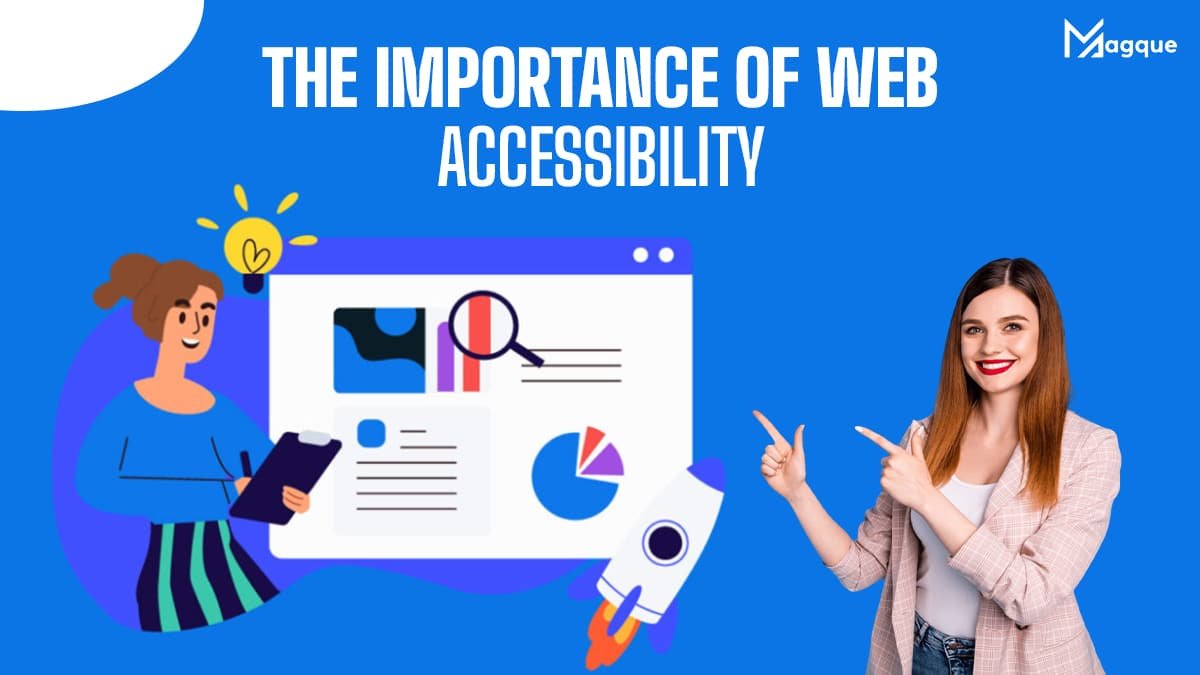Have you ever tried accessing a website and found navigating it frustratingly tricky? Perhaps the text needed to be bigger, the colors clashed, or the buttons were impossible to click. These are just a few examples of the barriers faced by individuals with disabilities when browsing the web. But why does web accessibility matter, and how can we ensure everyone can access and use our websites regardless of their abilities?
Understanding the Importance of Web Accessibility
Web accessibility refers to designing and developing websites that can be used by people of all abilities, including those with disabilities. This includes individuals with visual, auditory, physical, cognitive, and neurological impairments. But it’s not just about accommodating people with disabilities; it’s about creating an inclusive online experience for everyone.
Why Accessibility Matters
Accessibility isn’t just a moral imperative; it’s also a legal requirement in many countries. Failure to comply with accessibility standards can result in lawsuits, fines, and damage to your brand’s reputation. Moreover, inaccessible websites limit your audience and potential customer base, as people with disabilities are often unable to use them effectively.
Strategies for Success
Now that we understand the importance of web accessibility let’s explore some key strategies for ensuring that our websites are inclusive and user-friendly:
- Alt Text for Images: Provide descriptive alt text for all images to ensure that visually impaired users can understand the content.
- Keyboard Navigation: Ensure that all functionality can be accessed using a keyboard alone, as some users may be unable to use a mouse.
- Color Contrast: Use high-contrast colors for text and background to make content more accessible to read for users with low vision.
- Straightforward Navigation: Keep navigation simple and intuitive, with descriptive labels that make it easy for all users to find what they want.
- Accessible Forms: Ensure that forms are easy to navigate and complete, with clear instructions and error messages.
- Video Captions and Transcripts: Provide captions and transcripts for videos to make them accessible to users who are deaf or hard of hearing.
- Responsive Design: Ensure your website is responsive and works well on various devices, including smartphones and tablets.
Implementing these strategies can ensure that your website is accessible to all users, regardless of their abilities. This will help you comply with legal requirements, avoid potential lawsuits, improve user experience, and make your website more inclusive and welcoming.
In conclusion, web accessibility is not just a nice-to-have; it’s a must-have for any website owner who wants to reach the broadest possible audience and provide an inclusive online experience. By prioritizing accessibility in your web design and development process, you can ensure that everyone has equal access to the information and services offered on your website.
Magque is committed to promoting web accessibility and helping website owners create inclusive online experiences. Contact us today to learn more about our accessibility services and how we can help you unlock the power of web accessibility.
FAQs
Q1. Why is web accessibility important?
Web accessibility ensures that all individuals, including those with disabilities, can access and use websites effectively. It promotes inclusivity and compliance with legal requirements and enhances user experience.
Q2. Who benefits from web accessibility?
Web accessibility benefits many individuals with visual, auditory, physical, cognitive, and neurological impairments. It also benefits older users, users with temporary disabilities, and those using assistive technologies.
Q3. What are the consequences of ignoring web accessibility?
Ignoring web accessibility can lead to legal consequences, including lawsuits and fines. Additionally, inaccessible websites limit your audience and damage your brand’s reputation. Prioritizing accessibility is crucial for reaching a diverse audience and avoiding potential liabilities.
Q4. What are some common barriers to web accessibility?
Common barriers to web accessibility include a lack of alternative text for images, inaccessible forms and navigation, poor color contrast, and non-responsive design. These barriers can make it difficult or impossible for users with disabilities to access and use website content.
Q5. How can I improve web accessibility on my website?
You can improve web accessibility by implementing strategies such as providing descriptive alt text for images, ensuring keyboard navigation, using high-contrast colors, creating straightforward navigation, making forms accessible, providing video captions and transcripts, and ensuring responsive design. Prioritizing accessibility in your web design and development process is critical to creating an inclusive online experience for all users.
Read Also This:- Web Accessibility Trends: Inclusive Design for All Users












